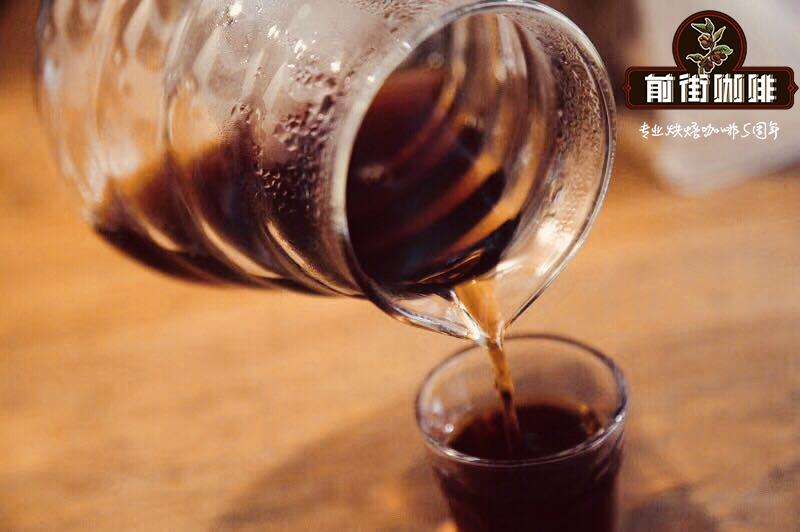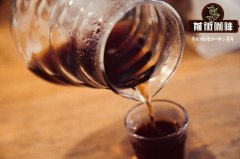There are several kinds of coffee brewing methods: the facade of three-stage water injection of coffee.

Professional coffee knowledge exchange more coffee bean information please follow the coffee workshop (Wechat official account cafe_style)
Introduction to Qianjie-hand-made Coffee extraction
Staged cooking itself is changing the total cooking time and extraction efficiency. For example, the high temperature of the first half is to enhance the extraction efficiency, while the low temperature of the second half reduces the extraction efficiency to prevent the introduction of too much bad flavor. The problem of this part is to improve the concentration and adjust the BODY in the second half.
In the preparation stage, the most important thing is to select the filter paper and wash the filter paper by hand. Because it determines whether your cup of coffee is good or bad.
Filter paper: divided into bleached filter paper and log filter paper.
Bleached filter paper: contains fluorescent agent, but drinking water for a long time is harmful to your health, and unscrupulous filter paper may also contain a lot of bleach flavor. Therefore, when selecting bleached filter paper, be sure to buy the right filter paper, please do not use unqualified filter paper. It not only affects the flavor of your coffee, but also harms your health.
Log filter paper: you may want to say that since bleaching contains fluorescent ingredients, which is harmful to health, I will choose non-bleached filter paper. That's right, but unbleached filter paper will have a serious wood flavor of pulp.
Log filter paper, no bleaching. However, it contains a lot of woody flavor, which greatly affects the flavor of coffee.
Therefore, the selection of filter paper is very important, choose brand merchants, qualified filter paper, and then wash it with water to remove the odor and present the high quality flavor of coffee.
However, nowadays, because of the concept of environmental protection, Japan has developed a new variety of filter paper-flax filter paper (not used, but directly powdered with water). Interested students can buy it and try it.
Well, I always use experimental data as a reference. This time, I chose a bean to experiment with "three-stage" extraction. Is it easy to extract clean and bright coffee?
Malaba
Malaba coffee is a bourbon species.
Monsoon fermentation. Under the influence of the tropical monsoon climate, Malaba placed raw beans in the west under the influence of the humid southwest monsoon climate from June to September and was blown by the moist sea breeze before export, resulting in a stale spice smell. The salt content of raw bean is increased, the acid base is low, and the thickness of alcohol is high. Some people describe this bean as similar to "kelp soup".
Extraction method: three-stage extraction
Gouache ratio: 1:15
Water temperature: 92 °
Degree of grinding: medium grinding (near coarse sugar)
Filter cup: kalita cake cup
Filter paper: bleached cake cup filter paper
Extraction process: the first stage: 30ml water injection; steaming for 30 seconds; the second stage: 90ml water injection; extraction for 40 seconds; the third stage: 100ml water injection; the extraction ends for 55 seconds
Flavor: mellow thickness, spices, dark chocolate, orange peel flavor, no obvious acidity, balance. The silk is sweet, the aftertaste is spicy, the temperature drops, cereal, mugi-cha flavor.
Knowledge point: it is richer than a knife stream, and it can clarify the flavor of the front, middle and back of the coffee. The method is to increase the amount of water injection each time after steaming, usually when the coffee liquid is about to drop to the surface of the powder layer, and use small, medium and large water flow to do three-stage extraction.
In short: Qianjie is a coffee research hall, happy to share the knowledge about coffee with you, we share unreservedly just to make more friends fall in love with coffee, and there will be three low-discount coffee activities every month. The reason is that Qianjie wants to make more friends drink the best coffee at the lowest price, which has been Qianjie's tenet for 6 years!
END
Important Notice :
前街咖啡 FrontStreet Coffee has moved to new addredd:
FrontStreet Coffee Address: 315,Donghua East Road,GuangZhou
Tel:020 38364473
- Prev

Coffee brewing methods can be divided into three types of hand-brewed coffee water injection stage three to determine the flavor
Professional coffee knowledge exchange More coffee bean information Please pay attention to coffee workshop (Weixin Official Accounts cafe_style) Front street-hand coffee extraction introduction Coffee brewing methods are more than three, common are: Italian brewing hand brewing siphon pot brewing ① water wetting filter paper: Before brewing coffee, you need to put the folded filter paper into the filter cup, and put the filter cup on the coffee cup.
- Next

A brief introduction to the extraction method of hand-brewed coffee the reason for three-stage water injection of hand-brewed coffee is that the coffee tastes better
Professional coffee knowledge exchange more coffee bean information please follow the coffee workshop (Wechat official account cafe_style) front street-hand brew coffee extraction introduction continuous injection method, also known as one-stage, one-knife flow, is a commonly used water injection method when making deep-roasted coffee beans while using a smaller filter cup. Continuous injection method, usually does not use a higher water temperature, in order to fine
Related
- Beginners will see the "Coffee pull flower" guide!
- What is the difference between ice blog purified milk and ordinary milk coffee?
- Why is the Philippines the largest producer of crops in Liberia?
- For coffee extraction, should the fine powder be retained?
- How does extracted espresso fill pressed powder? How much strength does it take to press the powder?
- How to make jasmine cold extract coffee? Is the jasmine + latte good?
- Will this little toy really make the coffee taste better? How does Lily Drip affect coffee extraction?
- Will the action of slapping the filter cup also affect coffee extraction?
- What's the difference between powder-to-water ratio and powder-to-liquid ratio?
- What is the Ethiopian local species? What does it have to do with Heirloom native species?

